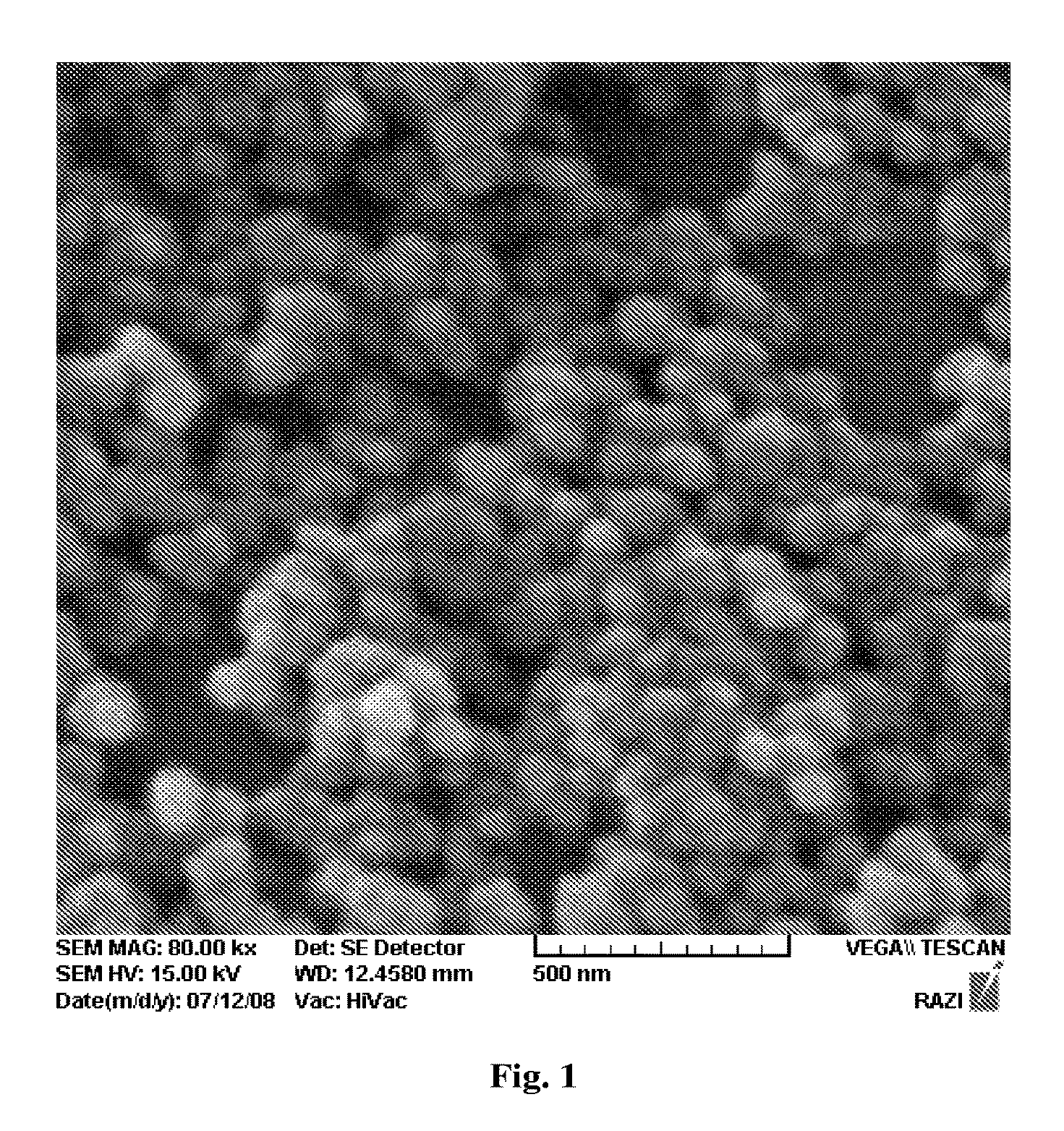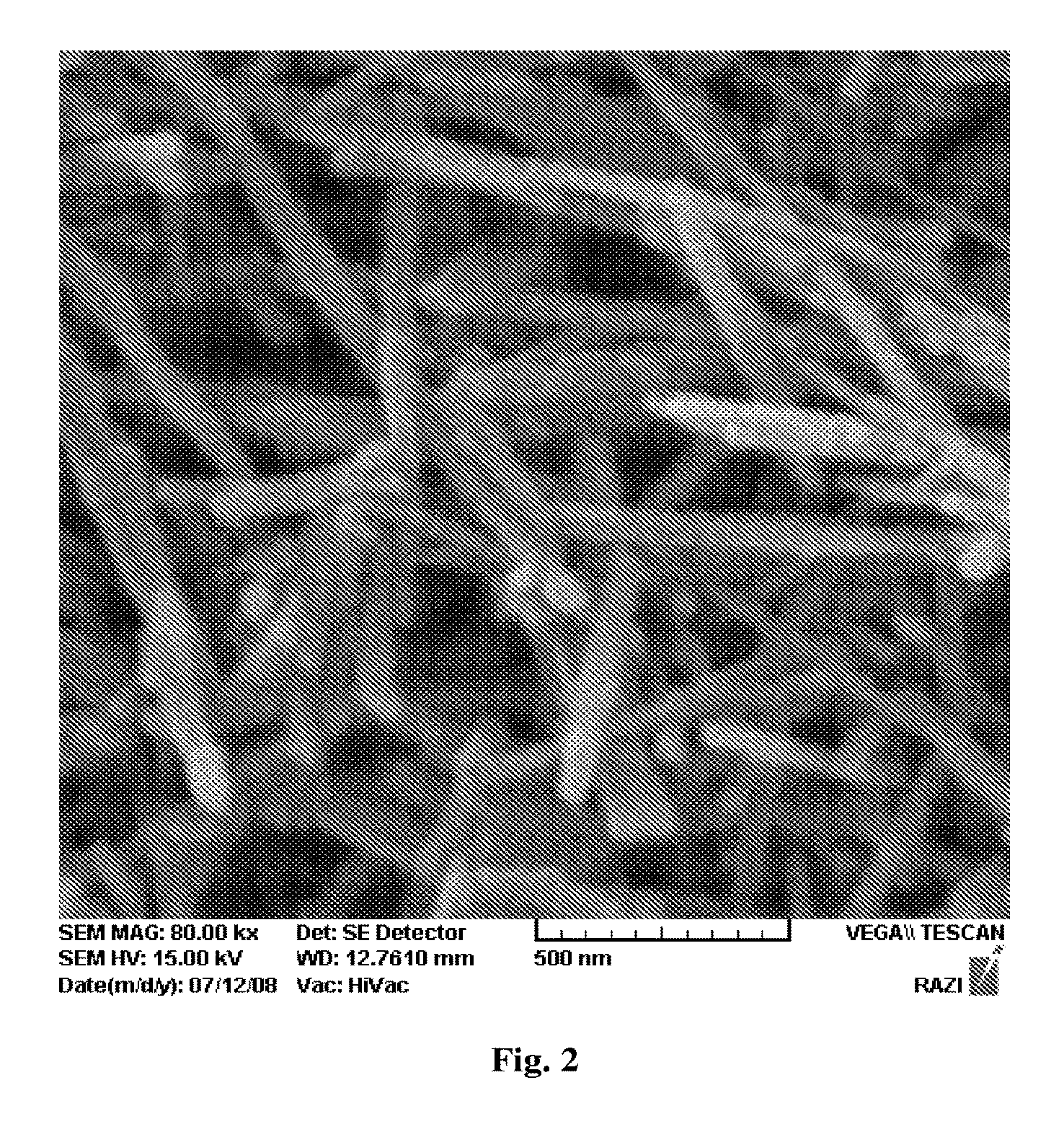Method for production of biocompatible nanoparticles containing dental adhesive
a biocompatible and adhesive technology, applied in dental prosthetics, dental preparations, inorganic chemistry, etc., can solve the problems of high nano-sized particles, inability to meet the optimum experimental conditions, etc., to achieve high purity, high crystallinity, and high aspect ratio
- Summary
- Abstract
- Description
- Claims
- Application Information
AI Technical Summary
Benefits of technology
Problems solved by technology
Method used
Image
Examples
Embodiment Construction
[0015]The primary objective of the embodiments herein is to provide a dentine adhesive or a dental composition having improved properties and comprising biocompatible inorganic filler such as Hydroxyapatite (HAp).
[0016]Another objective of the embodiments herein is to provide a low cost, simple method of producing such composition in less time.
[0017]Yet another objective of the embodiments herein is to synthesize nano-sized hydroxyapatite having various structural and morphological properties.
[0018]Still further objective of the embodiments herein is to improve the bond strength of a new dental adhesive to dentin by including the hydroxyapatite nanorods, as biocompatible fillers having high purity, high crystallinity, high aspect ratio and high colloidal properties.
[0019]These and other objects and advantages of the embodiments herein will become readily apparent from the following detailed description taken in conjunction with the accompanying drawings.
SUMMARY
[0020]The embodiments ...
PUM
| Property | Measurement | Unit |
|---|---|---|
| temperature | aaaaa | aaaaa |
| temperature | aaaaa | aaaaa |
| diameter | aaaaa | aaaaa |
Abstract
Description
Claims
Application Information
 Login to View More
Login to View More - R&D
- Intellectual Property
- Life Sciences
- Materials
- Tech Scout
- Unparalleled Data Quality
- Higher Quality Content
- 60% Fewer Hallucinations
Browse by: Latest US Patents, China's latest patents, Technical Efficacy Thesaurus, Application Domain, Technology Topic, Popular Technical Reports.
© 2025 PatSnap. All rights reserved.Legal|Privacy policy|Modern Slavery Act Transparency Statement|Sitemap|About US| Contact US: help@patsnap.com



